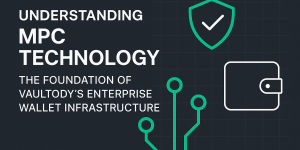Stablecoins, Cryptocurrencies, and the 401(k): What Trump’s Executive Order Means for Investors and Enterprises

In August 2025, U.S. President Donald Trump signed a landmark executive order that could reshape the way millions of Americans save for retirement. The move allows 401(k) pension plans — traditionally dominated by stocks, bonds, and index funds — to include alternative assets such as private equity, real estate, and notably - cryptocurrencies.
While the headlines focus on retail investors, the implications stretch far beyond individual savers. Enterprises, asset managers, and fintech providers like Vaultody stand at the edge of a new era where digital assets play a formal role in retirement planning.
The Growing Popularity of Cryptocurrencies and Stablecoins
Over the past decade, cryptocurrencies have moved from niche speculation to mainstream finance. Bitcoin remains the most recognized, but stablecoins — digital currencies pegged to fiat currencies like the U.S. dollar — have gained remarkable traction. Stablecoins such as USDC and USDT offer the speed and programmability of crypto without the extreme volatility that makes some investors wary.
With the 401(k) order in place, stablecoins may become the “gateway asset” for traditional savers entering the crypto market. Their predictability could help mitigate some of the volatility risks in mixed portfolios while giving plan managers new ways to diversify.
Why Trump’s 401(k) Order Is a Game Changer
Historically, 401(k) managers avoided crypto and other alternative assets because of regulatory uncertainty, legal risks, and concerns about volatility. The new order addresses these barriers by:
- Providing legal and political cover for plan managers to add alternative assets.
- Encouraging diversification beyond traditional equity-heavy index funds.
- Aligning with a pro-crypto policy agenda, signaling further deregulation of digital assets.
This policy shift was backed by significant lobbying from private equity giants and crypto-friendly groups. The White House reportedly saw cryptocurrencies as part of a broader economic modernization plan — and even linked them to Trump’s political support base.
The Benefits of Cryptocurrencies in 401(k) Portfolios
While crypto carries risks, there are clear advantages to including it in retirement plans:
- Diversification – Cryptocurrencies, particularly when paired with stablecoins, can reduce reliance on traditional equity market performance.
- High Growth Potential – Assets like Bitcoin, Ethereum, and Solana have demonstrated significant long-term appreciation despite short-term volatility.
- Inflation Hedge – Some investors see Bitcoin and certain stablecoin strategies as protection against currency devaluation.
- Access to Emerging Markets – Blockchain-based assets open doors to innovative financial products and DeFi (decentralized finance) opportunities.
For enterprises managing large retirement plans or offering them to employees, these benefits could also enhance employee satisfaction and attract talent in competitive industries.
Risks to Consider
The potential upside comes with notable challenges:
- Volatility – While stablecoins dampen swings, most cryptocurrencies remain highly volatile, which could affect portfolio stability.
- Liquidity and Valuation Issues – Certain crypto assets and private equity investments are harder to value and sell.
- Regulatory Changes – The current political climate is favorable to crypto, but a future shift in administration could tighten regulations.
- Higher Fees – Managing alternative assets typically comes with increased administrative and advisory costs.
Enterprises considering integrating crypto into 401(k) offerings should weigh these factors carefully and ensure compliance with ERISA fiduciary obligations.
What This Means for Enterprises and Institutional Players
For enterprise clients — Vaultody’s primary audience — the opportunity is twofold:
- Corporate Treasury Diversification – Beyond retirement plans, enterprises can explore stablecoins and cryptocurrencies for treasury management, cross-border payments, and liquidity solutions.
- Employee Benefit Innovation – Offering crypto-inclusive retirement plans could position companies as forward-thinking employers, especially in tech-forward sectors.
With the right custody, compliance, and reporting tools, enterprises can embrace this change without compromising on security or governance.
How Vaultody Fits In
Vaultody provides enterprise-grade digital asset custody and management solutions designed for security, compliance, and scalability. As enterprises, asset managers, and plan administrators adapt to the new 401(k) landscape, Vaultody’s offerings can:
- Safeguard retirement plan crypto allocations with multi-layer security and institutional-grade custody.
- Facilitate stablecoin management for treasury and investment purposes.
- Integrate with enterprise systems for reporting and compliance in line with regulatory requirements.
By bridging the gap between traditional finance and the emerging digital asset economy, Vaultody empowers organizations to capture the benefits of this policy shift while managing risk effectively.
Looking Ahead
The Department of Labor is expected to release guidance within the next six months, shaping how quickly crypto-inclusive 401(k) products come to market. Large asset managers like BlackRock and Apollo are already preparing target-date funds that blend public and private assets — potentially including cryptocurrencies and stablecoins.
Whether you view this as a risky experiment or a historic leap toward democratizing alternative assets, the direction is clear: cryptocurrencies are becoming a mainstream component of financial planning. For enterprises, early adoption could mean not only financial upside but also strategic positioning in an increasingly digital economy.
Bottom line: The 401(k) executive order has cracked open the door for cryptocurrencies and stablecoins to enter one of the most traditional corners of finance. For enterprises and institutional investors, this is a moment to evaluate how digital assets can fit into both corporate investment strategies and employee benefits. With the right partners, the future of retirement — and finance — may be more blockchain-powered than ever before.




 Login
Login







 Copy link
Copy link